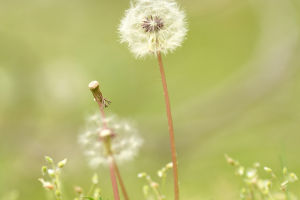Have you ever wondered about the captivating beauty of plants that can add vibrance to your garden? Sky Blooms, scientifically known as Alcea Rosea, are among the most stunning options for any garden enthusiast.
Native to China, this plant has found its way into gardens across the world, brightening up landscapes with its colorful flowers and providing benefits beyond just aesthetic appeal. Today, let's explore why Sky Blooms should be part of our garden setup, the history behind them, and the best ways to cultivate them.
Alcea Rosea
video by Zoe Woodward Gardening
What are Sky Blooms?
Sky Blooms, or Alcea Rosea, belong to the Malvaceae family, where they are highly revered. They can grow as high as 2-3 meters, forming tall, upright stems that produce beautiful, colorful flowers. These flowers come in various shades such as purple, red, white, and even black-purple. Known for their eye-catching beauty, they have earned several names over time, including "One Meter Red" due to their height and vivid red blossoms. Interestingly, the flowers bloom just around the time of the Dragon Boat Festival, earning them the nickname "Dragon Boat Flowers" in some regions.
Where Can Sky Blooms Be Found?
Sky Blooms are widely distributed across southern and southwestern China, especially in provinces like Sichuan and Guizhou. They have been cultivated for over 2,000 years, making them one of the oldest plants in Chinese horticulture. Beyond China, Sky Blooms have been introduced to Europe and other parts of the world. Whether it’s in local gardens or large landscapes, you can spot Sky Blooms thriving in various climates.
Growing Conditions and Care
Sky Blooms thrive best in sunny spots but can tolerate partial shade. While they can withstand cooler climates, they are not fond of excessive moisture, making it important to avoid waterlogging. These plants are quite resilient, growing well in fertile, well-drained soils. When cultivating them, make sure to plant them in a spot that provides ample sunlight, and ensure that the soil has good drainage to avoid root rot.
As for the planting method, Sky Blooms can be propagated by seeds, cuttings, or division. The seeds are typically sown in spring, and with proper care, they bloom from late spring to early autumn.
Medicinal and Culinary Uses
Not only are Sky Blooms visually appealing, but they also serve practical purposes. The roots of the plant have medicinal properties and are known to help with clearing heat, detoxifying, and promoting urination. The flowers and seeds also have medicinal uses, such as promoting urination and aiding in the elimination of toxins.
In addition to their medicinal benefits, the tender shoots and flowers are edible. In the spring, the young shoots can be collected, washed, and boiled before being tossed into salads, stir-fried, or made into soups. Sky Blooms thus provide both beauty and utility in a garden setting.
Sky Blooms in Landscaping
Sky Blooms make excellent choices for garden backgrounds, often used as tall plants for creating flower borders or filling in large garden spaces. Their towering structure and vibrant flowers provide visual interest, making them perfect for flower beds, garden edges, and even along walls or fences. Their adaptability to various growing conditions also makes them a versatile choice for gardeners.
Dealing with Pests and Diseases
Like many plants, Sky Blooms are not immune to pests and diseases. One common issue is rust disease, which causes orange spots to appear on the leaves. Regular checks for pests like red spiders and aphids are recommended, and prompt treatment can keep these plants healthy. Additionally, maintaining good airflow and avoiding overcrowding can prevent disease outbreaks.
The Perfect Addition to Your Garden
Whether you’re an experienced gardener or a beginner looking to add color to your space, Sky Blooms are a great addition. Their tall, colorful flowers will not only brighten up your garden but also provide practical benefits in the form of medicinal properties and edible parts. With a bit of care and the right growing conditions, these plants can thrive and add lasting beauty to any garden.
So, next time you're planning your garden's layout, consider adding some Sky Blooms. They're more than just pretty flowers—they're an investment in your garden’s aesthetic, health, and functionality!
Join Us in the World of Sky Blooms!
We hope this article inspires you to explore the world of Sky Blooms. Have you grown them before, or is this your first time considering them for your garden? Let us know in the comments below, and feel free to share any tips or experiences you've had with these beautiful plants! Happy gardening, Lykkers!


